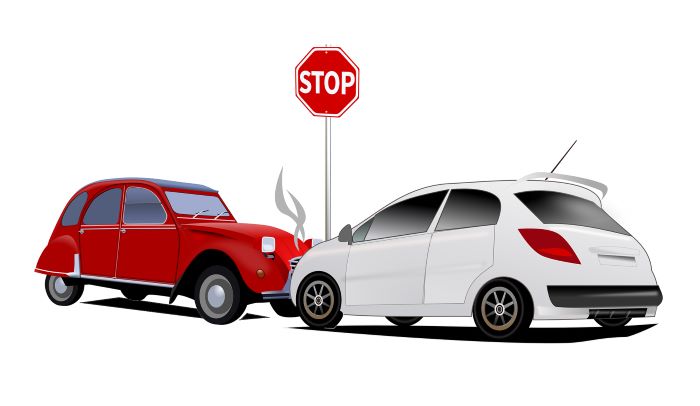Dos and Don’ts to Keep in Mind Before Learning How to Drive a Car
Table of Contents
- The Importance of Learning the Essential Functions of a Car
- Displaying the Learner’s Sign
- Wearing Seatbelts
- Communicating Effectively on the Road
- Things to Avoid as a Beginner Driver
- Driving Without Focus
- Exceeding Speed Limits
- Avoiding Distractions
- Driving Under the Influence
- Maintaining Safe Distances
The Importance of Learning the Essential Functions of a Car
Before you start learning how to drive a car, it’s essential to familiarize yourself with the various parts and functions of the vehicle. Understanding the basics will help you operate the car safely and handle any emergencies that may arise. Here are some essential functions you should know:
- Checking air pressure: Regularly check the air pressure of your car’s tires to ensure they are properly inflated. This helps optimize fuel efficiency and ensures a smooth and safe ride.
- Understanding indicators: Familiarize yourself with the different indicators on the dashboard, such as oil levels, fuel indicators, and warning lights. Being aware of these indicators can help you detect any potential issues with your car and take appropriate action.
- Using lights: Learn how to operate the headlights, sidelights, and indicators. These lights play a crucial role in ensuring your visibility on the road and signaling your intentions to other drivers.
- Basic maintenance: Learn how to perform basic maintenance tasks like checking the oil level and filling up the fuel tank. Regular maintenance will keep your car running smoothly and reduce the risk of breakdowns.
By understanding these essential functions, you’ll be better equipped to handle your car and ensure its optimal performance.
Displaying the Learner’s Sign
If you are driving with a learner’s license, it is mandatory to display an ‘L’ sign in red on the front and back windscreens of your car. This sign informs other drivers that you are still learning how to drive and encourages them to be patient and cautious around you. It’s a safety measure mandated by the Government of India and helps create a safer environment for all road users.
Wearing Seatbelts
One of the most important safety measures while driving is wearing seatbelts. Always buckle up and ensure that all passengers in your car are also wearing seatbelts. Seatbelts help keep you securely positioned in your seat and minimize the risk of serious injuries in the event of a collision or sudden stop. Make it a habit to fasten your seatbelt before you start the engine, and remind your passengers to do the same.
Communicating Effectively on the Road
Effective communication is essential when driving on the road. It helps ensure smooth traffic flow and minimizes the risk of accidents. Here are some key communication methods you should be familiar with:
- Indicators: Learn how to use your indicators to signal your intentions to other drivers. Use them when changing lanes, making turns, or merging into traffic. Indicators help other drivers anticipate your actions and adjust their driving accordingly.
- Hand signals: In some situations, such as when your indicators are not working or in the case of a breakdown, hand signals can be used to communicate with other drivers. Familiarize yourself with common hand signals and their meanings.
- Eye contact: Maintaining eye contact with other drivers and pedestrians can help establish clear communication. Eye contact can signal your intention to proceed or yield and can help avoid misunderstandings on the road.
- Horn usage: Use your horn sparingly and only when necessary. The horn is primarily used as a warning signal to alert other drivers of your presence or to communicate potential dangers. Avoid using the horn to express frustration or impatience.
By communicating effectively on the road, you contribute to a safer and more harmonious driving environment.
Things to Avoid as a Beginner Driver
As a beginner driver, it’s essential to be aware of the common mistakes and behaviors that can compromise your safety and the safety of others on the road. Here are some things to avoid:
Driving Without Focus
Driving requires your full attention and concentration. Avoid driving when you are feeling fatigued, stressed, or emotionally unstable. These factors can impair your ability to make quick decisions and react appropriately to changing road conditions. If you are not in the right state of mind, it’s best to avoid getting behind the wheel.
Exceeding Speed Limits
Speed limits are set for a reason – to ensure safe driving conditions for everyone on the road. Always adhere to the speed limits specified for different types of roads, including national highways, state highways, and roads within city limits. Excessive speeding reduces your ability to control the vehicle and react to unexpected situations, increasing the likelihood of accidents.
Avoiding Distractions
Distracted driving is a leading cause of accidents. Avoid using mobile phones, texting, or engaging in any other activities that take your focus away from the road. In India, talking on the phone and texting while driving is not only dangerous but also a punishable offense. Keep your mobile devices aside and concentrate solely on driving.
Driving Under the Influence
Never drive under the influence of alcohol or any other substances that impair your judgment and coordination. Even small amounts of alcohol can affect your reaction time and decision-making abilities. Driving while intoxicated not only puts your life at risk but also endangers the lives of others on the road.
Maintaining Safe Distances
Maintaining a safe distance from the vehicle in front of you is crucial for safe driving. Tailgating, which refers to driving too closely behind another vehicle, increases the risk of rear-end collisions. Leave enough space between your car and the vehicle ahead so that you have enough time to react and stop safely if necessary.
In conclusion, learning how to drive a car is an exciting milestone, but it comes with great responsibility. By following the dos and avoiding the don’ts outlined in this article, you can ensure a safer and more enjoyable driving experience. Remember, practice makes perfect, and continuous learning is key to becoming a skilled and responsible driver. Stay focused, obey traffic laws, and prioritize safety at all times.




